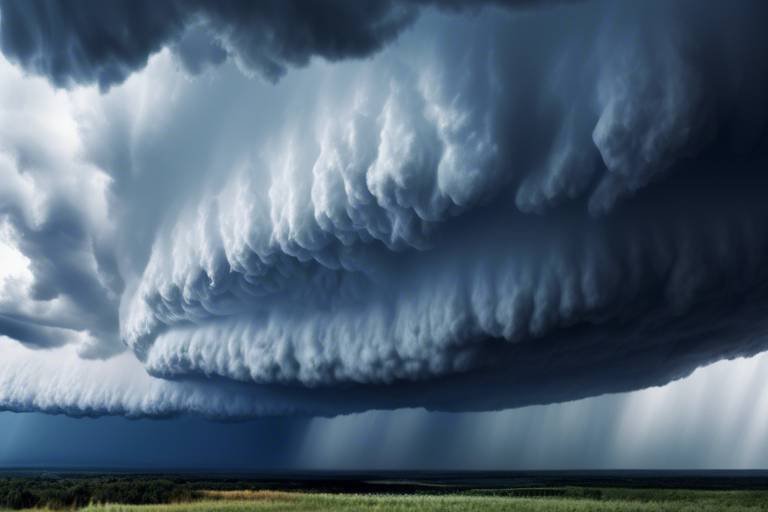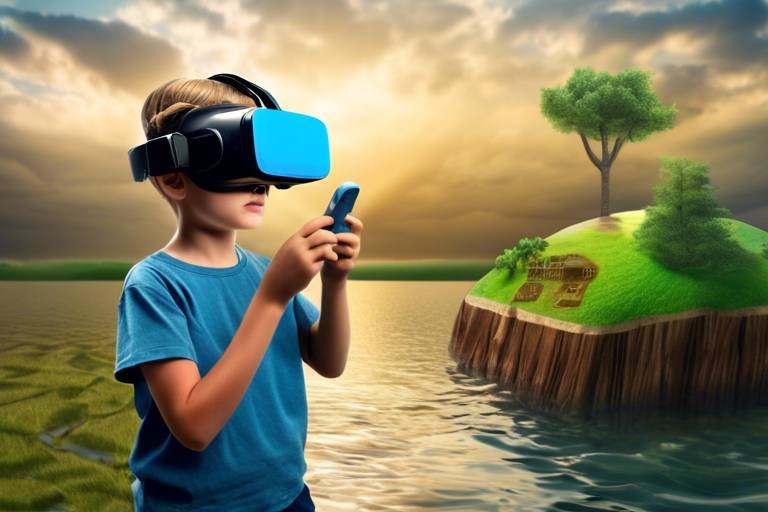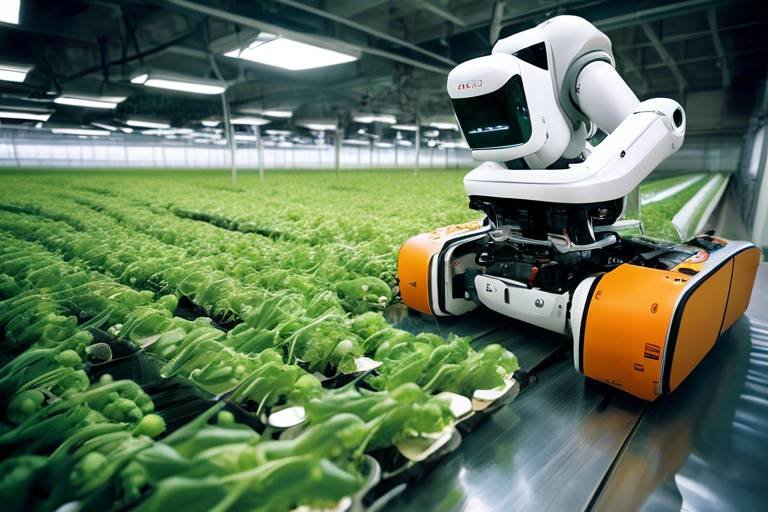The Science of Predictive Analytics in Weather Forecasting
Have you ever wondered how meteorologists predict the weather days or even weeks in advance? It’s not just magic or luck; it’s the fascinating world of predictive analytics that powers these forecasts. In a nutshell, predictive analytics combines historical data, statistical algorithms, and machine learning techniques to forecast future weather conditions. Imagine trying to predict the outcome of a football game by analyzing past performances, player conditions, and even weather influences. That’s the essence of predictive analytics in weather forecasting!
At its core, predictive analytics in weather forecasting is about understanding patterns. Just like a detective piecing together clues to solve a mystery, meteorologists gather data from various sources, analyze it, and use it to make educated guesses about what the weather will do next. This process involves several key components, including data collection, statistical modeling, and the application of advanced algorithms. Each of these elements plays a crucial role in enhancing the accuracy of weather predictions.
One of the most exciting aspects of predictive analytics is its ability to adapt. Just as we learn from our mistakes, predictive models improve over time by learning from new data. This means that the more data meteorologists collect, the better their predictions become. Think of it as a student who gets better grades by studying harder and learning from their past mistakes. This adaptability is vital, especially in an era where climate change is making weather patterns more unpredictable.
In the following sections, we will dive deeper into the methodologies and technologies that underpin predictive analytics in weather forecasting. We’ll explore how data is collected from various sources, the role of machine learning, and the challenges faced by meteorologists in their quest to provide accurate forecasts. By the end of this article, you’ll not only grasp the science behind weather forecasting but also appreciate the incredible advancements that have made it possible.
Understanding the basic principles of predictive analytics is crucial for grasping its application in weather forecasting. This section delves into data collection, statistical models, and algorithms used in the field.
Weather forecasting relies on diverse data sources, including satellite imagery, weather stations, and radar. This section discusses how these data sources contribute to predictive models and their importance in accurate forecasting.
Remote sensing technologies play a vital role in gathering atmospheric data. This subsection covers the various types of remote sensing tools and their applications in enhancing weather prediction accuracy.
Satellite imagery provides critical information about cloud patterns and temperature variations. This part explains how meteorologists interpret satellite data to improve weather forecasts.
Radar systems are essential for tracking precipitation and storm systems. This section highlights how radar technology enhances real-time weather monitoring and forecasting capabilities.
Machine learning techniques are increasingly utilized in weather forecasting. This subsection explores how algorithms learn from historical data to improve predictive accuracy and adapt to changing weather patterns.
Despite advancements, predictive analytics in weather forecasting faces several challenges. This section discusses issues such as data accuracy, model limitations, and the unpredictability of weather systems.
The quality of data significantly impacts forecasting accuracy. This subsection examines the challenges posed by incomplete or erroneous data and their effects on predictive models.
No forecasting model is perfect. This section discusses the inherent limitations of predictive models and the uncertainties they introduce into weather forecasting.
The future of weather forecasting is shaped by emerging technologies and methodologies. This section explores trends such as artificial intelligence, improved data collection methods, and their potential impact on predictive analytics.
AI is revolutionizing weather forecasting by enhancing data analysis. This subsection discusses how AI can improve model performance and forecasting accuracy.
Advancements in computational power enable more complex modeling. This section examines how increased computational capabilities lead to better simulations and forecasts in meteorology.
- What is predictive analytics? Predictive analytics is the use of statistical algorithms and machine learning techniques to identify the likelihood of future outcomes based on historical data.
- How does weather forecasting work? Weather forecasting works by gathering data from various sources, analyzing it with statistical models, and using algorithms to predict future weather conditions.
- What role does machine learning play in weather forecasting? Machine learning helps improve the accuracy of weather predictions by allowing algorithms to learn from historical data and adapt to new information.
- What are the challenges in predictive weather analytics? Challenges include data quality, model limitations, and the inherent unpredictability of weather systems.

The Fundamentals of Predictive Analytics
Understanding the basic principles of predictive analytics is crucial for grasping its application in weather forecasting. At its core, predictive analytics involves using historical data and statistical techniques to make informed predictions about future events. In the realm of weather forecasting, this means analyzing vast amounts of meteorological data to forecast weather patterns and climate changes. The process typically begins with data collection, where meteorologists gather information from various sources, including weather stations, satellites, and radar systems. This data serves as the foundation for building predictive models.
Once the data is collected, the next step involves employing statistical models and algorithms. These models help to identify trends and patterns within the data. For instance, regression analysis can be used to understand how temperature changes might correlate with atmospheric pressure or humidity levels. Machine learning algorithms, which are a subset of predictive analytics, can also be utilized to improve forecasting accuracy. They learn from historical data, adapting to new information and refining their predictions over time. This ability to learn and adapt is what makes machine learning particularly powerful in the unpredictable world of weather.
Moreover, the integration of big data technologies has revolutionized the field of predictive analytics. With the ability to process and analyze large datasets quickly, meteorologists can create more sophisticated models that take into account a wider range of variables. This means that forecasts can be more accurate and timely, providing crucial information to those who need it most. For example, during severe weather events, accurate predictions can save lives and property by allowing for timely evacuations and preparations.
To illustrate the significance of predictive analytics in weather forecasting, consider the following table that summarizes the key components involved in the process:
| Component | Description |
|---|---|
| Data Collection | Gathering meteorological data from various sources such as satellites and weather stations. |
| Statistical Models | Using mathematical techniques to identify trends and relationships in the data. |
| Machine Learning | Employing algorithms that learn from historical data to improve predictive accuracy. |
| Big Data Technologies | Utilizing advanced technologies to process large datasets for more accurate forecasts. |
In conclusion, the fundamentals of predictive analytics in weather forecasting revolve around collecting and analyzing data, utilizing statistical models and algorithms, and leveraging the power of big data technologies. As we continue to refine these methodologies, the accuracy and reliability of weather forecasts will only improve, helping us to better prepare for the unpredictable nature of our atmosphere.
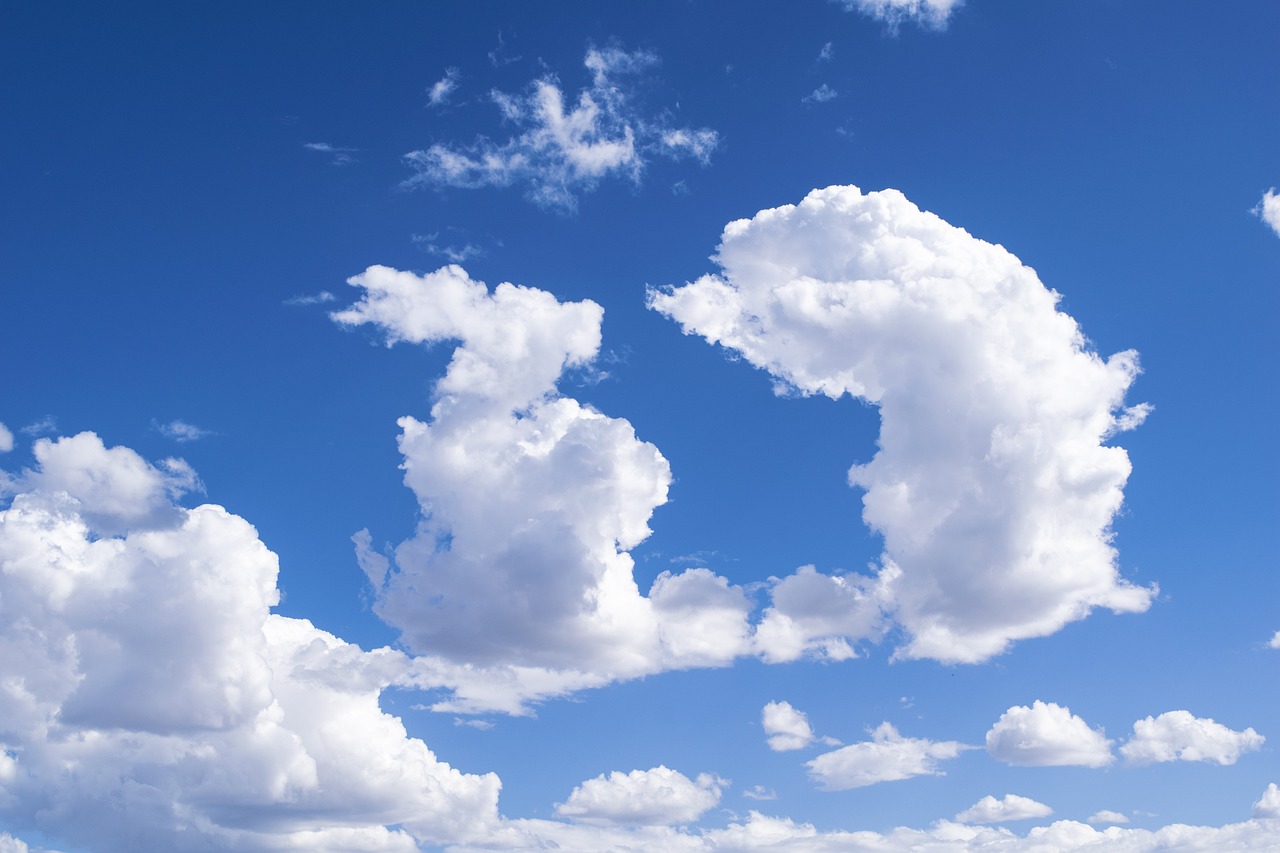
Data Sources in Weather Forecasting
Weather forecasting is a complex art and science that relies on a multitude of data sources to provide accurate predictions. Think of it like assembling a jigsaw puzzle where each piece represents a different piece of information about our atmosphere. The clearer the pieces, the better the picture we can create. The primary data sources include satellite imagery, ground-based weather stations, and radar systems, each contributing unique insights into the ever-changing weather patterns.
To break it down, let's explore these sources in more detail:
- Satellite Imagery: Satellites orbiting the Earth provide a bird's-eye view of cloud formations, temperature variations, and even storm systems. This data is crucial for understanding large-scale weather patterns and predicting phenomena like hurricanes or cold fronts. Meteorologists can analyze cloud cover and movement to anticipate weather changes days in advance.
- Weather Stations: Ground-based weather stations are the backbone of local weather data collection. These stations measure temperature, humidity, wind speed, and precipitation levels. The information gathered from thousands of these stations worldwide is aggregated to create a detailed picture of current weather conditions.
- Radar Systems: Radar technology is essential for tracking precipitation and storm systems in real-time. By sending out radio waves and measuring the time it takes for them to bounce back, meteorologists can determine the location, intensity, and movement of rain or snow. This immediate data is invaluable for issuing timely warnings and updates.
Each of these data sources plays a critical role in feeding predictive models. For instance, satellite data can provide the initial conditions needed for simulations, while radar data can help adjust forecasts based on real-time observations. The integration of these sources allows meteorologists to create more accurate weather models, enhancing our understanding of atmospheric dynamics.
Remote sensing technologies further amplify our ability to gather atmospheric data. By utilizing various tools such as LiDAR and radiosondes, meteorologists can obtain detailed profiles of the atmosphere. LiDAR, for example, uses light pulses to measure distances and can help in mapping cloud structures, while radiosondes are balloon-borne instruments that collect data on temperature, humidity, and pressure as they ascend through the atmosphere.
These technologies enable scientists to gather data from regions that are otherwise inaccessible or difficult to monitor, such as the upper layers of the atmosphere or remote oceanic areas. The result? A more comprehensive dataset that can significantly improve the accuracy of weather predictions.
In summary, the accuracy of weather forecasting hinges on the integration of various data sources. Each source, from satellite imagery to ground-based weather stations and advanced radar systems, contributes essential information that helps meteorologists make informed predictions. As technology continues to evolve, we can expect even more sophisticated data collection methods to emerge, further enhancing our ability to forecast the weather with precision.
Q: How do satellites contribute to weather forecasting?
A: Satellites provide crucial data about cloud formations, temperature changes, and storm systems, allowing meteorologists to predict large-scale weather patterns.
Q: What role do weather stations play?
A: Ground-based weather stations measure local atmospheric conditions like temperature, humidity, and wind speed, which are essential for creating accurate forecasts.
Q: Can radar systems predict severe weather?
A: Yes, radar systems track precipitation and storm movements in real-time, enabling timely warnings for severe weather events.

Remote Sensing Technologies
Remote sensing technologies are a cornerstone of modern meteorology, providing invaluable data that enhances our understanding of atmospheric conditions. These technologies enable meteorologists to gather data from vast distances, revealing intricate details about weather patterns that would otherwise be difficult to obtain. Imagine trying to predict the weather without being able to see the clouds or measure the temperature in different regions; it would be like trying to navigate a ship through fog without a compass. That's where remote sensing comes in, acting as our guiding light in the complex world of weather forecasting.
The primary types of remote sensing technologies include satellites, radar, and ground-based sensors. Each of these tools plays a unique role in collecting data, which is then analyzed to produce accurate weather forecasts. For instance, satellites orbiting the Earth capture images of cloud formations, while radar systems track precipitation and storm movements. Ground-based sensors complement these technologies by providing localized data, such as temperature and humidity readings. Together, these tools create a comprehensive picture of the atmosphere, allowing meteorologists to make informed predictions.
One of the most significant advancements in remote sensing is the use of satellite imagery. Satellites equipped with high-resolution cameras can capture detailed images of the Earth's surface and atmosphere. These images help meteorologists observe large-scale weather systems, such as hurricanes and cold fronts, and monitor changes in cloud cover and temperature. The data collected from satellites is not only crucial for immediate weather forecasting but also for studying long-term climate trends. By analyzing satellite data over time, scientists can better understand how climate change is impacting weather patterns globally.
Radar systems, on the other hand, excel at providing real-time data on precipitation. By emitting radio waves and measuring their reflection off raindrops, these systems can determine the location, intensity, and movement of storms. This capability is essential for issuing timely warnings for severe weather events, such as thunderstorms, tornadoes, and flash floods. The ability to visualize precipitation in real-time allows meteorologists to track storms as they develop and provide accurate forecasts to the public. In fact, the integration of radar data into forecasting models has significantly improved the accuracy of short-term weather predictions.
Moreover, the advent of ground-based remote sensing technologies has further enhanced our ability to monitor weather conditions. Instruments such as weather balloons and automated weather stations collect vital atmospheric data, including temperature, wind speed, and humidity. This localized data is essential for validating satellite and radar observations, ensuring that forecasts are as accurate as possible. The combination of these various remote sensing technologies creates a robust framework for weather forecasting, allowing for a more nuanced understanding of atmospheric dynamics.
In conclusion, remote sensing technologies are indispensable in the field of meteorology. They provide the data necessary to predict weather patterns accurately and understand the complexities of our atmosphere. As technology continues to evolve, we can expect even greater advancements in remote sensing capabilities, leading to more precise and reliable weather forecasts. The future of weather forecasting is bright, and remote sensing will undoubtedly play a significant role in shaping it.
- What is remote sensing in weather forecasting?
Remote sensing refers to the collection of data about the Earth's atmosphere and surface from a distance, using technologies such as satellites and radar. - How do satellites contribute to weather forecasting?
Satellites provide critical images and data on cloud formations, temperature variations, and large-scale weather systems, aiding meteorologists in making accurate forecasts. - What role does radar play in meteorology?
Radar systems track precipitation and storm movements in real-time, allowing for timely warnings and improved short-term weather predictions. - Are ground-based sensors important for weather forecasting?
Yes, ground-based sensors provide localized data that complements satellite and radar observations, enhancing overall forecasting accuracy.
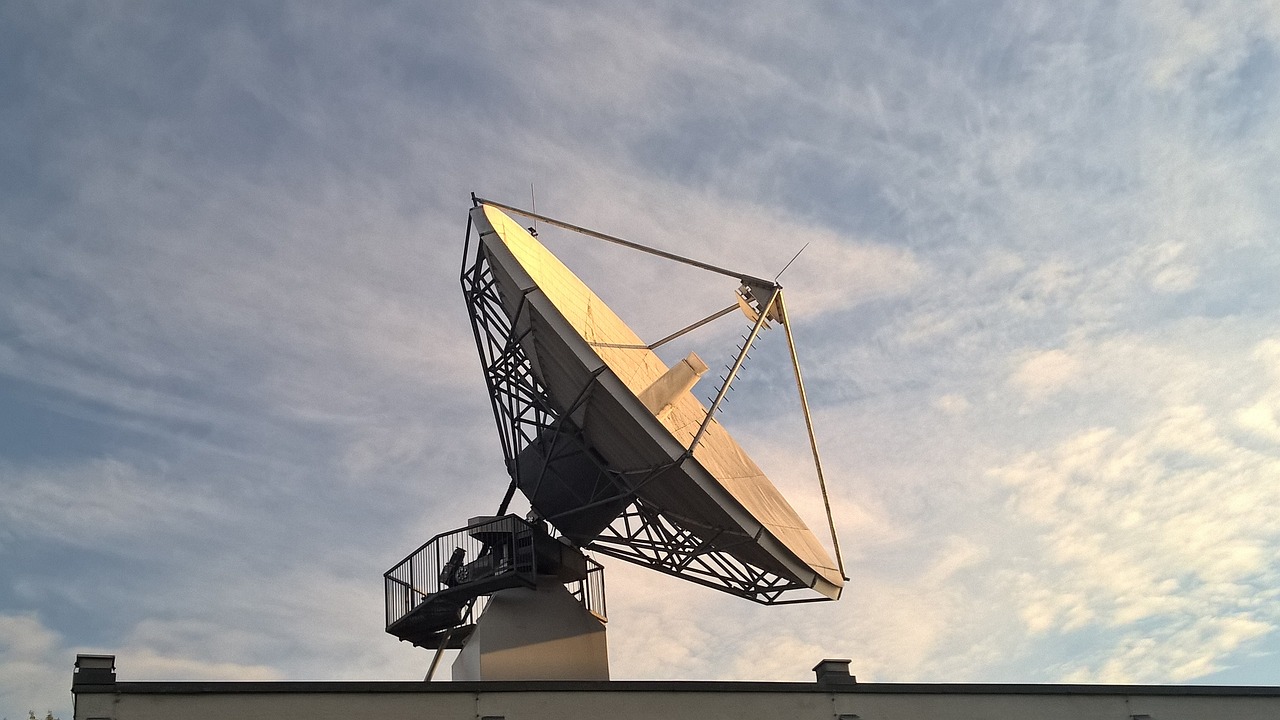
Satellite Imagery
When it comes to weather forecasting, is like the eyes in the sky, providing meteorologists with a comprehensive view of the Earth's atmosphere. This technology captures real-time images of cloud formations, temperature variations, and even the movement of storms across vast distances. Imagine trying to predict the weather without being able to see the clouds or the patterns they create—it's like navigating a ship in the fog without a compass!
Satellites orbiting the Earth gather data that is crucial for understanding weather systems. They utilize various sensors to capture images in different wavelengths, which helps scientists analyze not only the visible light but also infrared and microwave signals. This multi-spectral approach allows for a deeper understanding of atmospheric conditions and can reveal information such as:
- Cloud cover: Identifying the type and thickness of clouds helps predict precipitation.
- Temperature profiles: Satellites can measure the temperature of the surface and the atmosphere, giving insights into thermal dynamics.
- Moisture content: Understanding humidity levels is essential for forecasting rain and storms.
One of the most significant advantages of satellite imagery is its ability to provide data over large geographical areas, including remote regions where ground-based observations might be sparse. For instance, during severe weather events like hurricanes or typhoons, satellite data becomes indispensable. Meteorologists can track the storm's path, intensity, and potential impact on coastal areas, allowing for timely warnings and preparation.
Moreover, advancements in satellite technology have led to the development of geostationary satellites that continuously monitor the same area, providing updates every few minutes. This capability is particularly useful for tracking rapidly developing weather phenomena. For example, the GOES (Geostationary Operational Environmental Satellites) system operated by NOAA (National Oceanic and Atmospheric Administration) has been a game-changer, offering detailed imagery that helps forecasters make more accurate predictions.
In summary, satellite imagery is a cornerstone of modern meteorology. It not only enhances the accuracy of weather forecasts but also plays a crucial role in disaster preparedness and response. As technology continues to evolve, we can expect even more precise data from satellites, further improving our ability to understand and predict weather patterns.
As we delve deeper into the world of weather forecasting, it’s clear that satellite imagery is more than just pretty pictures of clouds—it's a vital tool that saves lives and property by providing critical information to those who need it most.
- What is satellite imagery? Satellite imagery refers to images of the Earth collected by satellites, which are used to monitor weather patterns, climate changes, and natural disasters.
- How does satellite imagery improve weather forecasting? It provides real-time data on cloud formations, temperature, and moisture levels, allowing for more accurate predictions of weather events.
- What types of satellites are used for weather forecasting? Geostationary and polar-orbiting satellites are primarily used, with geostationary satellites providing continuous monitoring of specific areas.
- Can satellite imagery predict severe weather? Yes, satellite imagery is crucial for tracking severe weather events like hurricanes, allowing for timely warnings and preparedness measures.
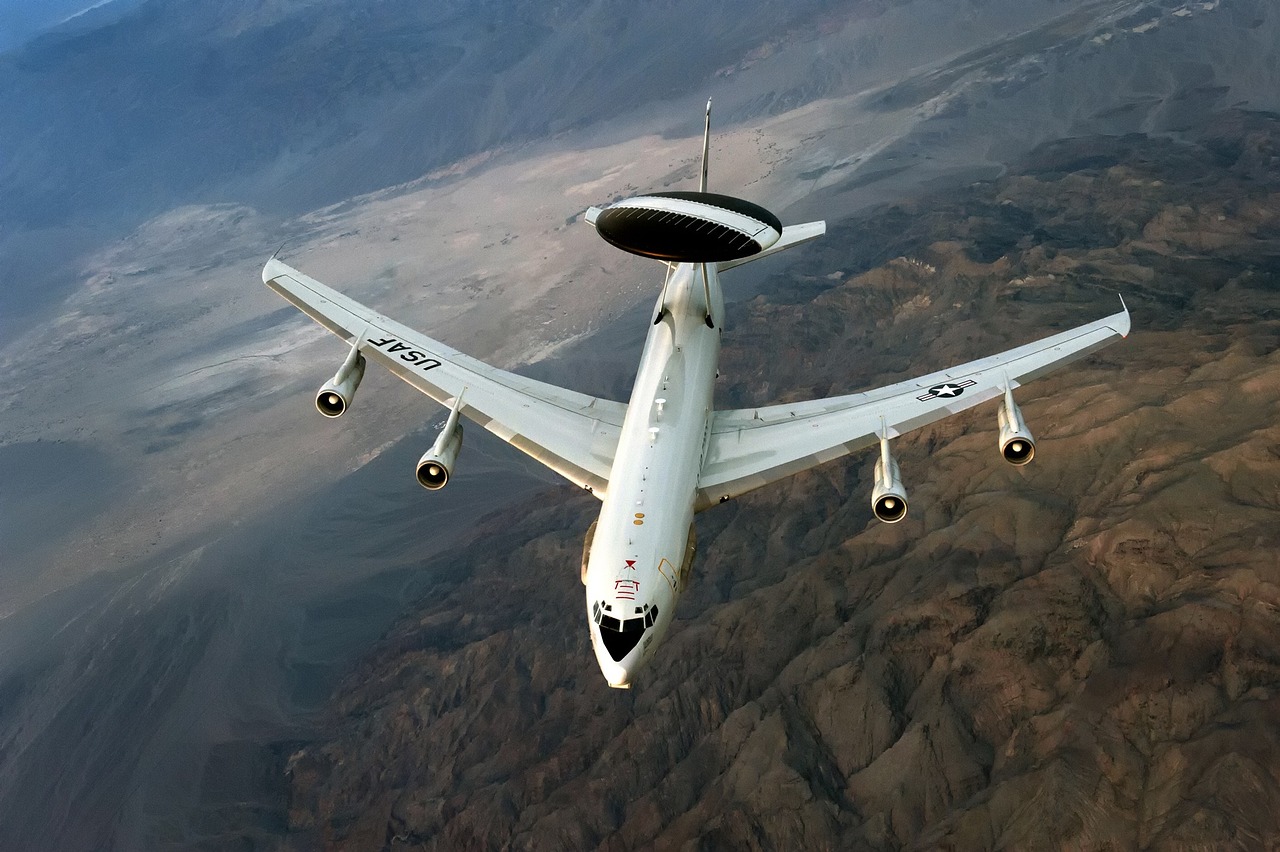
Radar Systems
Radar systems are the unsung heroes of modern meteorology, providing crucial insights into precipitation and storm systems. Imagine standing in a field during a thunderstorm, feeling the wind whip around you and hearing the distant rumble of thunder. Now, think about how meteorologists, sitting miles away in their offices, can predict that very storm's path and intensity with remarkable accuracy. This is largely thanks to radar technology.
At its core, radar (which stands for Radio Detection and Ranging) works by sending out radio waves and measuring the time it takes for those waves to bounce back after hitting an object, such as raindrops or hail. This data allows meteorologists to create a detailed picture of the atmosphere, showing where precipitation is occurring and how it is moving. The ability to visualize weather patterns in real-time is a game-changer, providing critical information that can save lives and property.
There are several types of radar systems used in weather forecasting, including:
- Weather Radar: This is the most common type, used to detect precipitation intensity, movement, and type (rain, snow, sleet, etc.).
- Doppler Radar: This advanced system measures the change in frequency of the returned signal, allowing meteorologists to determine wind speeds and direction, which is essential for tracking severe weather.
- Dual-Polarization Radar: This newer technology sends out both horizontal and vertical pulses, providing more detailed information about precipitation types and sizes, enhancing the accuracy of forecasts.
One of the most significant advantages of radar systems is their ability to provide real-time data. Unlike satellite imagery, which can take several minutes to update, radar can show changes in weather conditions almost instantaneously. This capability is particularly crucial during severe weather events, such as tornadoes or hurricanes, where every second counts. By continuously monitoring the atmosphere, radar systems can alert meteorologists to developing storms, allowing them to issue warnings and help communities prepare for impending weather threats.
Moreover, radar data can be integrated with other meteorological tools and models, creating a comprehensive approach to weather forecasting. For example, when combined with satellite data, meteorologists can gain a better understanding of storm systems, leading to more accurate predictions. This integration is vital for improving forecasting models and ensuring that the public receives timely and reliable information.
In summary, radar systems are a cornerstone of modern weather forecasting, enabling meteorologists to track storms and precipitation with unprecedented accuracy. As technology continues to advance, we can expect radar systems to become even more sophisticated, further enhancing our ability to predict and respond to weather events.

Machine Learning in Weather Prediction
Machine learning is rapidly transforming the landscape of weather forecasting, offering unprecedented capabilities that enhance predictive accuracy. At its core, machine learning involves algorithms that can learn from and make predictions based on data. In the context of weather prediction, this means that models can analyze vast amounts of historical weather data, identify patterns, and make informed forecasts about future conditions. Imagine having a super-smart assistant that can sift through mountains of data in seconds, pinpointing trends that would take a human years to uncover. That's the power of machine learning in action!
One of the most remarkable aspects of machine learning is its ability to improve over time. As it processes more data, it becomes more adept at recognizing subtle changes in weather patterns. This is particularly useful in predicting extreme weather events, such as hurricanes or tornadoes, where every second counts. For instance, a machine learning model can analyze data from thousands of weather stations and satellites, learning to detect the early signs of a brewing storm. This capability not only enhances the accuracy of forecasts but also provides critical lead time for communities to prepare and respond.
Moreover, machine learning models can adapt to changing weather patterns, which is essential in our current climate landscape where traditional models may struggle. By continuously updating their algorithms based on new data, these models can remain relevant and precise, even as climate conditions evolve. This adaptability is akin to having a weather-savvy friend who keeps up with the latest trends and can give you a heads-up when conditions are about to change.
However, it's important to note that while machine learning offers significant advantages, it also comes with challenges. For instance, the quality of the data fed into these models is crucial. If the data is flawed or incomplete, the predictions can be misleading. Additionally, the complexity of the algorithms can sometimes lead to a lack of transparency, making it difficult for meteorologists to understand how certain predictions are generated. To illustrate this, consider the following table that outlines some key advantages and challenges of using machine learning in weather prediction:
| Advantages | Challenges |
|---|---|
| Improved accuracy in forecasts | Dependence on data quality |
| Ability to adapt to new patterns | Complexity of algorithms |
| Real-time processing of vast data | Potential for overfitting |
In conclusion, machine learning is revolutionizing the way we approach weather forecasting. Its ability to analyze vast datasets, learn from historical trends, and adapt to changing conditions makes it a powerful tool for meteorologists. As technology continues to advance, we can expect even more sophisticated models that will enhance our understanding of weather patterns and improve our ability to predict them accurately. With such tools at our disposal, we are better equipped to face the challenges posed by our ever-changing climate.
- What is machine learning? Machine learning is a subset of artificial intelligence that enables systems to learn from data and improve their predictions over time without explicit programming.
- How does machine learning improve weather forecasting? By analyzing large datasets and recognizing patterns, machine learning models can provide more accurate and timely weather predictions.
- What are the challenges of using machine learning in weather prediction? Challenges include data quality, algorithm complexity, and the potential for overfitting, which can affect the accuracy of forecasts.
- Can machine learning predict extreme weather events? Yes, machine learning has shown promise in predicting extreme weather events by identifying early warning signs from historical data.

Challenges in Predictive Weather Analytics
Despite the remarkable advancements in predictive analytics, the field of weather forecasting is not without its challenges. These hurdles can significantly impact the accuracy and reliability of forecasts, leaving both meteorologists and the public grappling with uncertainties. One of the primary challenges lies in data accuracy. Weather forecasting relies heavily on vast amounts of data collected from various sources. However, if this data is incomplete or erroneous, it can lead to significant discrepancies in the predictive models. For instance, a single faulty sensor at a weather station can skew the entire dataset, resulting in misleading forecasts.
Moreover, the inherent limitations of forecasting models present another significant challenge. No predictive model can claim to be perfect. Each model has its own assumptions and simplifications, which can introduce uncertainties into the forecasting process. When meteorologists rely on these models, they must constantly weigh the potential inaccuracies against the information they provide. This balancing act can be likened to navigating through fog; while you may have a general sense of direction, the obscured path can lead to unexpected detours.
In addition to data quality and model limitations, the unpredictability of weather systems adds another layer of complexity. Weather is inherently chaotic and influenced by numerous variables, many of which are difficult to quantify. For example, small changes in atmospheric conditions can lead to vastly different outcomes, making it challenging to predict severe weather events accurately. This unpredictability is akin to trying to predict the outcome of a complex chess game; while you can anticipate certain moves, the opponent's decisions can shift the entire strategy in an instant.
To illustrate these challenges further, consider the following table that summarizes the key issues faced in predictive weather analytics:
| Challenge | Description |
|---|---|
| Data Accuracy | Inaccurate or incomplete data can lead to flawed predictive models. |
| Model Limitations | No model is perfect; each has inherent assumptions that can introduce uncertainties. |
| Weather Unpredictability | Chaotic nature of weather systems makes precise forecasting difficult. |
Ultimately, while predictive analytics has transformed the landscape of weather forecasting, it is essential to acknowledge these challenges. Meteorologists and researchers are continuously working to improve data collection methods and refine predictive models. However, understanding the limitations and uncertainties involved is crucial for both professionals in the field and the general public. As we move forward, embracing these challenges will be key to enhancing the accuracy of weather forecasts and, consequently, our preparedness for the unpredictable nature of our climate.
- What is predictive analytics in weather forecasting?
Predictive analytics involves using statistical algorithms and machine learning techniques to analyze historical weather data and predict future weather patterns. - Why is data accuracy important in weather forecasting?
Accurate data is crucial because it directly influences the reliability of predictive models. Inaccurate data can lead to erroneous forecasts, which can have significant implications for safety and preparedness. - How do model limitations affect weather predictions?
Model limitations can introduce uncertainties in forecasts. Each model relies on specific assumptions, which can lead to varying results and affect the overall confidence in predictions.

Data Quality and Accuracy
The accuracy of weather forecasts hinges significantly on the quality of the data used in predictive analytics. Imagine trying to bake a cake without the right ingredients; no matter how skilled the baker, the end result will likely be less than desirable. Similarly, when meteorologists rely on incomplete or erroneous data, the forecasts they produce can lead to misleading conclusions and potential disasters. Data quality encompasses several factors, including completeness, consistency, and timeliness.
To illustrate the importance of data quality, consider the following aspects:
- Completeness: Missing data points can skew results. For instance, if a weather station fails to report temperature readings during a storm, the predictive model may underestimate the severity of the weather.
- Consistency: Data collected from various sources must be uniform. If one source measures rainfall in millimeters while another uses inches, combining these datasets can lead to confusion and inaccuracies.
- Timeliness: Weather data is time-sensitive. Delays in data collection can render information obsolete, especially during rapidly changing weather conditions.
Moreover, the integration of multiple data sources, such as satellite imagery and ground-based observations, introduces its own set of challenges. Each source has its own potential for error. For instance, satellite data may suffer from cloud cover that obscures surface conditions, while ground stations might be affected by local anomalies, such as urban heat islands. When these datasets are merged, the inconsistencies can propagate through the predictive models, leading to uncertain outcomes.
In the realm of predictive analytics, data quality is not just a technical issue; it's a matter of life and death. Accurate forecasts save lives by providing timely warnings of severe weather events. As such, meteorologists and data scientists are continually working to enhance data collection methods, improve data validation processes, and employ advanced algorithms that can identify and correct discrepancies in real time.
In conclusion, the quest for high-quality data in weather forecasting is ongoing. As technology evolves, so too does the ability to gather and analyze data more effectively. By prioritizing data quality and accuracy, we can improve our predictive models and, ultimately, the safety and preparedness of communities at risk from unpredictable weather patterns.
- What is predictive analytics in weather forecasting?
Predictive analytics in weather forecasting involves using historical data, statistical algorithms, and machine learning techniques to forecast future weather conditions. - How does data quality affect weather forecasts?
Data quality directly impacts the accuracy of weather forecasts; incomplete or erroneous data can lead to misleading predictions and inadequate responses to severe weather. - What role do satellite images play in weather forecasting?
Satellite images provide critical information about cloud patterns, temperature variations, and storm systems, which are essential for accurate weather predictions. - Are there limitations to predictive weather models?
Yes, all predictive models have limitations, including uncertainties in data quality, model assumptions, and the inherent unpredictability of weather systems. - How is AI changing weather forecasting?
AI enhances weather forecasting by improving data analysis, allowing for better model performance, and adapting to changing weather patterns through machine learning.
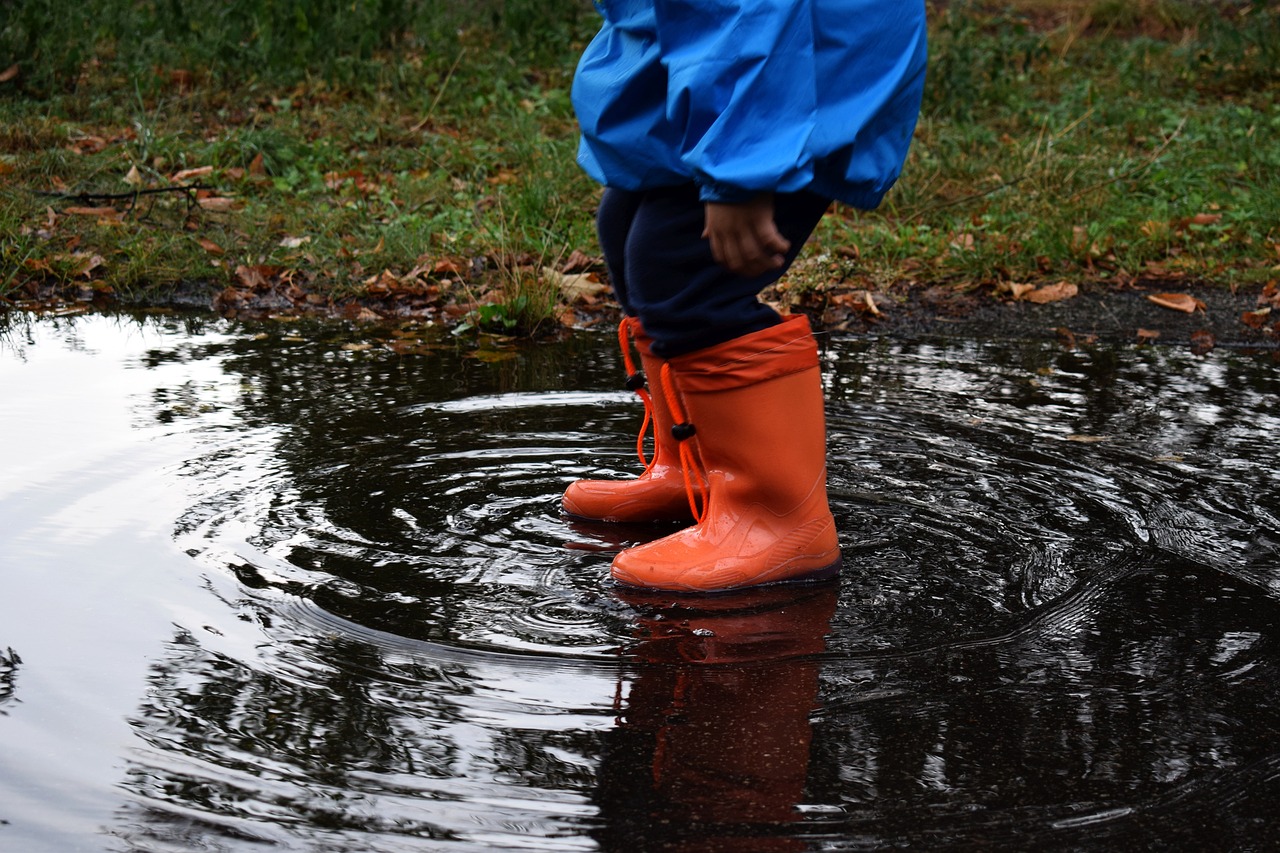
Model Limitations and Uncertainties
When it comes to weather forecasting, it's essential to recognize that no model is infallible. Despite the incredible advancements in technology and predictive analytics, limitations and uncertainties are an inherent part of the forecasting process. These challenges can stem from various factors, including the complexity of weather systems, the quality of input data, and the algorithms used in the models.
One significant limitation is the complexity of atmospheric phenomena. Weather is influenced by a multitude of variables, including temperature, humidity, wind patterns, and geographical features. The interactions between these variables can create unpredictable outcomes, making it difficult for models to accurately forecast conditions over longer periods. For instance, a model may predict sunshine tomorrow, but the sudden formation of a storm front can lead to unexpected rain. This unpredictability is akin to trying to predict the exact outcome of a game of chess; while you can anticipate several moves ahead, unforeseen tactics can change the game entirely.
Additionally, the quality of data fed into these models plays a crucial role in their accuracy. If the data is incomplete or erroneous, the forecasts can be significantly off. For example, if a weather station fails to report a sudden drop in temperature due to equipment malfunction, the model may not account for this change, leading to a misleading forecast. In a world where data is king, ensuring that the data collected is both accurate and comprehensive is paramount.
Moreover, the algorithms used in predictive models have their own limitations. Many models rely on historical data to make predictions, but this can be a double-edged sword. While historical data provides a foundation for understanding weather patterns, it may not adequately represent future conditions, especially in a rapidly changing climate. For example, if a model is trained primarily on data from a stable climate, it may struggle to adapt to new patterns emerging from climate change, such as increased frequency of extreme weather events.
To illustrate these uncertainties, consider the following table that outlines some common model limitations:
| Limitation | Description |
|---|---|
| Data Quality | Inaccurate or incomplete data can lead to faulty predictions. |
| Model Complexity | Weather systems are complex and can change rapidly, making precise forecasting challenging. |
| Algorithmic Limitations | Models may not account for new weather patterns due to reliance on historical data. |
| Computational Constraints | Some models may not be able to process vast amounts of data in real-time, affecting accuracy. |
In conclusion, while predictive analytics has revolutionized the way we forecast the weather, it is crucial to understand that limitations and uncertainties will always exist. Recognizing these challenges allows meteorologists to communicate more effectively with the public about the reliability of forecasts. Just as we wouldn’t rely solely on a single weather app for our weekend plans, it’s wise to consider multiple sources and understand the inherent uncertainties in any forecast.
- What are the main factors affecting weather forecasting accuracy?
Factors include data quality, model complexity, and the unpredictability of weather systems. - How do meteorologists handle uncertainties in forecasts?
Meteorologists use multiple models and data sources, along with their expertise, to provide the most accurate predictions possible. - Can predictive models improve over time?
Yes, as more data becomes available and algorithms are refined, predictive models can improve their accuracy and reliability.

Future Trends in Weather Forecasting
The future of weather forecasting is not just about predicting sunshine or rain; it's about harnessing the power of cutting-edge technologies to revolutionize how we understand and anticipate weather patterns. As we step into an era dominated by artificial intelligence (AI) and enhanced data collection methods, the landscape of meteorology is evolving at an unprecedented pace. Have you ever wondered how meteorologists can predict storms with such accuracy? It's all about the tools and technologies at their disposal, and the future promises even more!
One of the most exciting trends is the integration of artificial intelligence in weather forecasting. AI algorithms can analyze vast amounts of data from various sources, learning from historical weather patterns and improving their predictions over time. Imagine having a smart assistant that not only tells you the weather but also adapts its predictions based on the latest data! This capability allows meteorologists to forecast severe weather events with greater precision, potentially saving lives and property.
Moreover, advancements in computational power are paving the way for more complex modeling techniques. With increased computational capabilities, meteorologists can run simulations that account for a multitude of variables, leading to better forecasts. For instance, high-resolution models can simulate local weather phenomena, such as thunderstorms or microclimates, that traditional models might overlook. This means that not only will we be able to predict the weather more accurately, but we will also gain insights into the impact of climate change on local weather patterns.
Another trend worth noting is the improvement in data collection methods. Innovations such as drone technology and crowdsourced data are becoming increasingly popular. Drones can gather real-time atmospheric data from hard-to-reach areas, while crowdsourced data allows everyday people to contribute weather observations. This democratization of data collection enhances the overall quality and scope of information available for forecasting.
In addition to these technological advancements, the integration of big data analytics will play a crucial role in the future of weather forecasting. By analyzing large datasets from various sources—satellite imagery, weather stations, and social media—meteorologists can identify patterns and make predictions that were previously unimaginable. The ability to process and analyze big data in real-time means that we can respond to weather changes more swiftly and efficiently.
As we look ahead, the implications of these trends are profound. Enhanced forecasting capabilities will not only improve our daily lives but also have significant implications for industries such as agriculture, transportation, and disaster management. For instance, farmers can make better planting decisions based on accurate weather forecasts, while transportation companies can optimize routes to avoid severe weather conditions.
In conclusion, the future of weather forecasting is bright, driven by technological innovations and a deeper understanding of atmospheric science. As we embrace these advancements, we can look forward to a world where weather predictions are not just educated guesses but highly accurate forecasts that help us prepare for whatever Mother Nature has in store.
- What role does AI play in weather forecasting? AI enhances data analysis, enabling more accurate predictions by learning from historical weather data.
- How does increased computational power improve forecasting? It allows meteorologists to run complex simulations that consider more variables, leading to better local forecasts.
- What are some emerging data collection methods? Drones and crowdsourced data are becoming popular for gathering real-time atmospheric information.
- How will improved forecasting impact industries? Industries like agriculture and transportation will benefit from more accurate weather predictions, allowing for better decision-making.
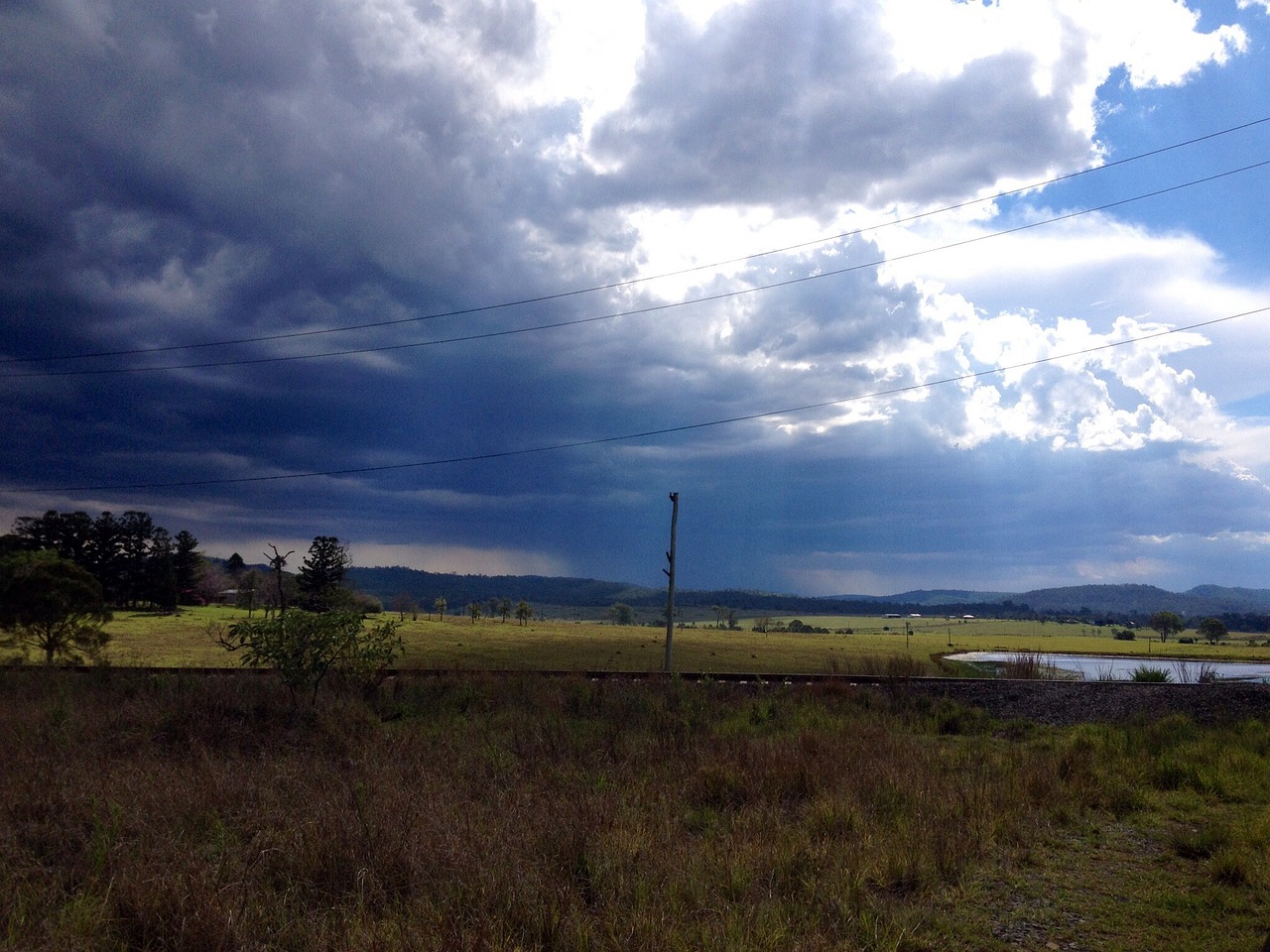
Artificial Intelligence Integration
In recent years, the integration of Artificial Intelligence (AI) into weather forecasting has been nothing short of revolutionary. Imagine a world where meteorologists can predict storms with unprecedented accuracy, providing timely alerts that save lives and property. This is not just a dream; it’s becoming a reality thanks to AI. By leveraging advanced algorithms and vast amounts of historical data, AI systems can identify patterns and trends that human analysts might miss.
One of the key advantages of AI in weather forecasting is its ability to process and analyze large datasets at lightning speed. Traditional forecasting methods often rely on static models that can become outdated quickly. In contrast, AI systems can continuously learn from new data, adapting their predictions in real-time. This means that as weather conditions change, the forecasts become more precise, leading to better decision-making for individuals and organizations alike.
Moreover, AI can enhance predictive models through techniques such as deep learning and neural networks. These technologies allow computers to mimic the way human brains work, recognizing complex patterns in data. For instance, a neural network might analyze satellite images and historical weather data to predict the likelihood of severe weather events, such as hurricanes or tornadoes. This kind of predictive power is invaluable, especially in regions prone to extreme weather.
Consider the following table that illustrates the differences between traditional weather forecasting methods and AI-enhanced forecasting:
| Aspect | Traditional Methods | AI-Enhanced Methods |
|---|---|---|
| Data Processing Speed | Slower, manual analysis | Rapid, automated analysis |
| Adaptability | Static models | Dynamic, learning algorithms |
| Pattern Recognition | Human interpretation | Machine learning capabilities |
| Forecast Accuracy | Variable, dependent on models | Improved, based on real-time data |
As we look to the future, the potential for AI in weather forecasting is enormous. Imagine AI systems that not only predict weather but also simulate various climate scenarios, helping us understand the potential impacts of climate change. This could lead to more effective preparedness strategies and policies aimed at mitigating the effects of extreme weather.
However, it’s important to note that while AI brings many benefits, it also introduces new challenges. Data privacy, algorithmic bias, and the need for human oversight are critical considerations that must be addressed as we continue to integrate AI into this vital field.
In summary, the integration of AI into weather forecasting is transforming the landscape of meteorology. With its ability to analyze vast amounts of data quickly and accurately, AI not only enhances our understanding of weather patterns but also empowers us to make more informed decisions in the face of uncertainty. As technology continues to evolve, we can expect AI to play an even more significant role in shaping the future of weather forecasting.
- What is predictive analytics in weather forecasting?
Predictive analytics involves using statistical algorithms and machine learning techniques to analyze historical weather data and predict future weather conditions. - How does AI improve weather forecasting?
AI enhances weather forecasting by analyzing large datasets quickly, recognizing complex patterns, and continuously learning from new data to improve predictions. - What are the challenges of using AI in weather forecasting?
Challenges include data privacy concerns, potential algorithmic bias, and the necessity for human oversight to ensure accuracy and reliability.
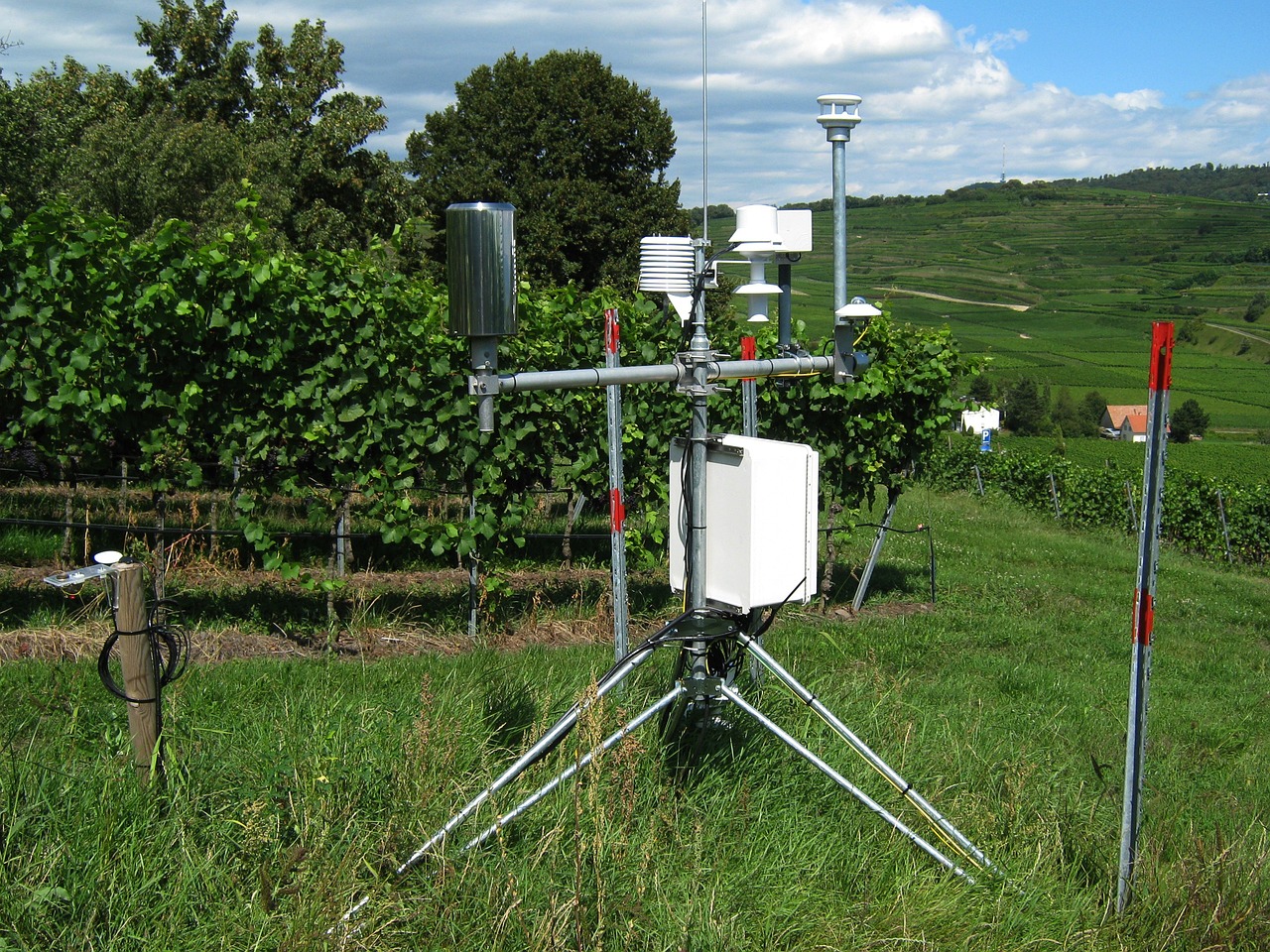
Enhanced Computational Power
As we dive deeper into the realm of weather forecasting, one cannot overlook the critical role that enhanced computational power plays in this field. Imagine trying to predict the weather as if you were piecing together a giant jigsaw puzzle, where each piece represents a different variable—temperature, humidity, wind speed, and so on. The more powerful our computational tools become, the easier it is to fit these pieces together accurately.
Modern weather models are incredibly complex, simulating the atmosphere's behavior based on vast amounts of data collected from various sources. With advanced computational power, meteorologists can run simulations that were previously unimaginable. These simulations help in understanding intricate phenomena like storm systems, ocean currents, and climate patterns. For instance, supercomputers can process trillions of calculations per second, allowing for real-time data analysis and quicker forecasting.
To illustrate this, consider the following table that highlights the advancements in computational power over the years:
| Year | Computational Power (FLOPS) | Significant Weather Model |
|---|---|---|
| 2000 | 1 Teraflop | Global Forecast System (GFS) |
| 2010 | 10 Petaflops | European Centre for Medium-Range Weather Forecasts (ECMWF) |
| 2020 | 200 Petaflops | High-Resolution Rapid Refresh (HRRR) |
With each leap in computational power, the accuracy of weather predictions improves significantly. For example, high-resolution models can simulate weather patterns at a much finer scale, allowing meteorologists to forecast localized events like thunderstorms or snow squalls with greater precision. This is akin to zooming in on a map; the closer you get, the clearer the details become.
Moreover, enhanced computational capabilities enable the integration of machine learning algorithms that can sift through historical weather data to identify patterns and trends. These algorithms learn from past events, refining their predictions as they go along. It’s like having a seasoned meteorologist who has memorized every weather pattern from the past, using that knowledge to make informed predictions about the future.
In conclusion, the synergy between enhanced computational power and predictive analytics is transforming the landscape of weather forecasting. As technology continues to evolve, we can expect even more accurate and timely forecasts, helping us prepare for whatever Mother Nature throws our way. Whether it's planning a weekend getaway or preparing for a severe storm, the advancements in computational power are paving the way for a future where weather forecasting is not just a science but an art.
- What is predictive analytics in weather forecasting?
Predictive analytics involves using statistical algorithms and machine learning techniques to analyze historical data and make forecasts about future weather conditions. - How does computational power enhance weather forecasting?
Enhanced computational power allows for the processing of vast amounts of data, enabling more complex models that can simulate weather patterns with greater accuracy. - What role does machine learning play in weather prediction?
Machine learning algorithms analyze historical weather data to identify patterns, improving the accuracy of forecasts over time. - What are some challenges in predictive weather analytics?
Challenges include data quality, model limitations, and the inherent unpredictability of weather systems.
Frequently Asked Questions
- What is predictive analytics in weather forecasting?
Predictive analytics in weather forecasting is the use of statistical algorithms and machine learning techniques to analyze historical data and predict future weather patterns. By examining past weather events and trends, meteorologists can make more accurate forecasts about upcoming weather conditions.
- How do data sources contribute to weather forecasting?
Data sources such as satellite imagery, weather stations, and radar systems provide essential information for predictive models. These sources gather real-time atmospheric data, which helps meteorologists understand current conditions and improve the accuracy of their forecasts.
- What role do remote sensing technologies play?
Remote sensing technologies, including satellites and radar, are crucial in collecting atmospheric data. They allow meteorologists to monitor weather systems from afar, providing valuable insights into cloud formations, precipitation, and temperature variations, which enhances forecasting accuracy.
- How does machine learning improve weather predictions?
Machine learning enhances weather predictions by allowing algorithms to learn from vast amounts of historical data. These algorithms can identify patterns and correlations that human analysts might miss, leading to improved accuracy in forecasting and better adaptation to changing weather conditions.
- What challenges do predictive analytics face in weather forecasting?
Predictive analytics in weather forecasting encounters challenges such as data quality and accuracy, model limitations, and the inherent unpredictability of weather systems. Incomplete or erroneous data can significantly impact the reliability of forecasts, and no model can perfectly predict the weather.
- What are the future trends in weather forecasting?
The future of weather forecasting is being shaped by advancements in artificial intelligence, improved data collection methods, and enhanced computational power. These trends promise to revolutionize how meteorologists analyze data and create models, leading to more accurate and timely forecasts.
- How is artificial intelligence integrated into weather forecasting?
Artificial intelligence is integrated into weather forecasting by improving data analysis processes. AI algorithms can process large datasets more efficiently than traditional methods, identifying trends and anomalies that can enhance model performance and forecasting accuracy.
- Why is computational power important in meteorology?
Increased computational power allows for more complex weather models and simulations. This advancement enables meteorologists to analyze more variables and create detailed forecasts, leading to better understanding and predictions of weather phenomena.

